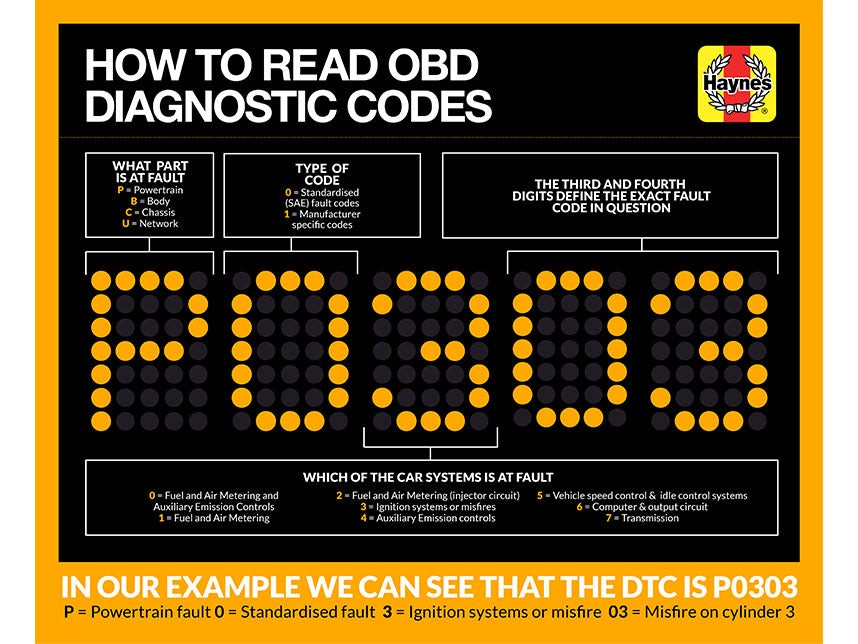Understanding your car’s diagnostic trouble codes (DTCs), or OBD2 error codes, can seem daunting. However, with a little knowledge, these codes can become a powerful tool for understanding and addressing your vehicle’s issues. This guide will help you decipher the meaning behind those cryptic codes and gain valuable insight into your car’s health. We’ll provide a clear breakdown of the OBD2 error code structure and offer a comprehensive list of common codes.
Deciphering OBD2 Error Codes: A Simple Guide
OBD2 error codes follow a standardized format, making them easier to understand than you might think. Each code consists of a letter and four numbers, each part providing specific information about the problem.
The First Letter: Identifying the Affected System
The first letter indicates which system in your car has encountered the issue:
- P: Powertrain (engine, transmission, and associated components)
- B: Body (air conditioning, power seats, airbags, etc.)
- C: Chassis (ABS, steering, suspension, etc.)
- U: Network (communication systems between control modules)
The First Number: Standardized or Manufacturer Specific
The first number differentiates between standardized and manufacturer-specific codes:
- 0: Standardized (SAE) fault codes, common across most vehicle makes and models.
- 1: Manufacturer specific codes, unique to a particular car manufacturer. These codes often provide more detailed information about the problem.
The Second Number: Pinpointing the Subsystem
The second digit narrows down the problem area within the affected system:
- 0: Fuel and Air Metering and Auxiliary Emission Controls
- 1: Fuel and Air Metering
- 2: Fuel and Air Metering (injector circuit)
- 3: Ignition Systems or Misfires
- 4: Auxiliary Emission Controls
- 5: Vehicle Speed Control & Idle Control Systems
- 6: Computer & Output Circuit
- 7: Transmission
The Third and Fourth Numbers: The Specific Fault
The final two digits pinpoint the exact fault code, providing detailed information about the specific problem within the subsystem. For instance, the code P0303 signifies:
- P: Powertrain Fault
- 0: Standardized Fault
- 3: Ignition Systems or Misfire
- 03: Misfire on Cylinder 3
 OBD2 Code Example P0303: Cylinder 3 Misfire
OBD2 Code Example P0303: Cylinder 3 Misfire
Common OBD2 Error Codes List
While a complete list of all possible OBD2 codes is extensive, here’s a table of some frequently encountered codes:
| Code | Code Identification |
|---|---|
| P0101 | Mass Air Flow (MAF) Sensor Circuit Range/Performance Problem |
| P0300 | Random/Multiple Cylinder Misfire Detected |
| P0420 | Catalyst System Efficiency Below Threshold (Bank 1) |
| P0171 | System Too Lean (Bank 1) |
| P0172 | System Too Rich (Bank 1) |
| P0401 | Insufficient EGR Flow |
| P0301 | Cylinder 1 Misfire Detected |
| P0135 | O2 Sensor Heater Circuit Malfunction (Bank 1, Sensor 1) |
| P0442 | Evaporative Emission Control System Leak Detected (small leak) |
* This is not an exhaustive list and not all codes apply to all vehicles.
Conclusion: Using OBD2 Codes for Effective Car Repair
OBD2 error codes provide a valuable starting point for diagnosing car problems. By understanding the structure of these codes and consulting a comprehensive OBD2 code list, you can gain a better understanding of your vehicle’s issues. While this guide offers valuable insight, remember that further diagnosis may be necessary to pinpoint the exact cause and solution. An OBD2 scanner can retrieve these codes, enabling you to address issues promptly and keep your car running smoothly.

